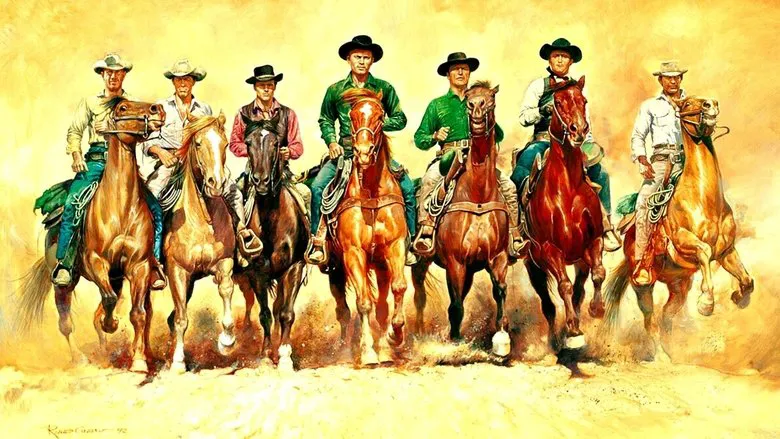The Enduring Legacy of “The Magnificent Seven”
“The Magnificent Seven” transcends mere entertainment; it stands as a cornerstone of cinematic history, offering layers of depth that reward repeated viewings. It’s a film that has influenced countless others, and continues to resonate with audiences today.
The narrative centers on a vulnerable Mexican village, perpetually terrorized by the notorious bandit Calvera and his ruthless gang. Driven to desperation, the villagers make a courageous decision: they pool their meager resources to hire a group of seven gunslingers for protection. This simple premise blossoms into a compelling exploration of courage, sacrifice, and the clash of cultures.
From Kurosawa to Leone: A Genealogical Masterpiece
One cannot discuss “The Magnificent Seven” without acknowledging its profound connection to Akira Kurosawa’s masterpiece, “Seven Samurai.” The lineage is undeniable. Kurosawa himself drew creative inspiration from classic American Westerns, creating a fascinating cultural exchange. “The Magnificent Seven”, in turn, served as a catalyst, propelling the Western genre towards its reinvention in Sergio Leone’s groundbreaking “A Fistful of Dollars” (1964).
This film then laid the groundwork for the gritty, realistic gangster films of the 1970s, influencing visionary directors such as Quentin Tarantino, Takeshi Kitano, and inspiring countless action movies from Hong Kong and Korea. The historical significance of “The Magnificent Seven” in this captivating genealogical line cannot be overstated; it is truly a pivotal, foundational text.
Defining Style in the Western Genre
During the late 1950s and early 1960s, the Western genre experienced a remarkable stylistic evolution. “The Magnificent Seven” may not have initiated this transformation, but it undeniably captured the shift with remarkable clarity and exceptional flair.
The film masterfully presents ironic yet earnest archetypes, a deliberately streamlined plot, and a heightened emphasis on dynamic movement and meticulously crafted choreography, going far beyond simple gunplay. Each character embodies a unique style, evident in the way they handle their weapons, mount their horses, and even wear their hats. The hat, in fact, becomes a potent symbol imbued with greater importance than the bullet itself, representing character, defiance, and individuality in a brutal world.
The Subtle Power of Gesture
Legend has it that Yul Brynner, a commanding presence in the film, meticulously tracked the number of times Steve McQueen, his co-star and on-screen rival, touched his hat during filming. Even these seemingly insignificant gestures resonated deeply with the audience, often conveying more meaning and impact than a fatal wound.
“The Magnificent Seven” draws its power from a potent combination of elements: a stirring and memorable musical theme (Elmer Bernstein delivered one of the genre’s finest soundtracks), sharp and witty dialogue that crackles with tension, and precise, deliberate gestures that communicate volumes.
Impressive Stunts and Everlasting Charm
Beyond its stylistic innovations and compelling characters, the film boasts impressive and memorable stunts. The scene where Chico (Horst Buchholz) swiftly dismounts one horse, dispatches a bandit, and immediately leaps into the saddle of the bandit’s horse is a standout example of masterful action choreography.
The film is so densely packed with unforgettable moments, iconic imagery, and quotable lines that it remains endlessly rewatchable, beckoning viewers to rediscover its rich layers time and time again. It stands as a testament to the power of visual storytelling, solidifying its place as a true classic of American cinema.